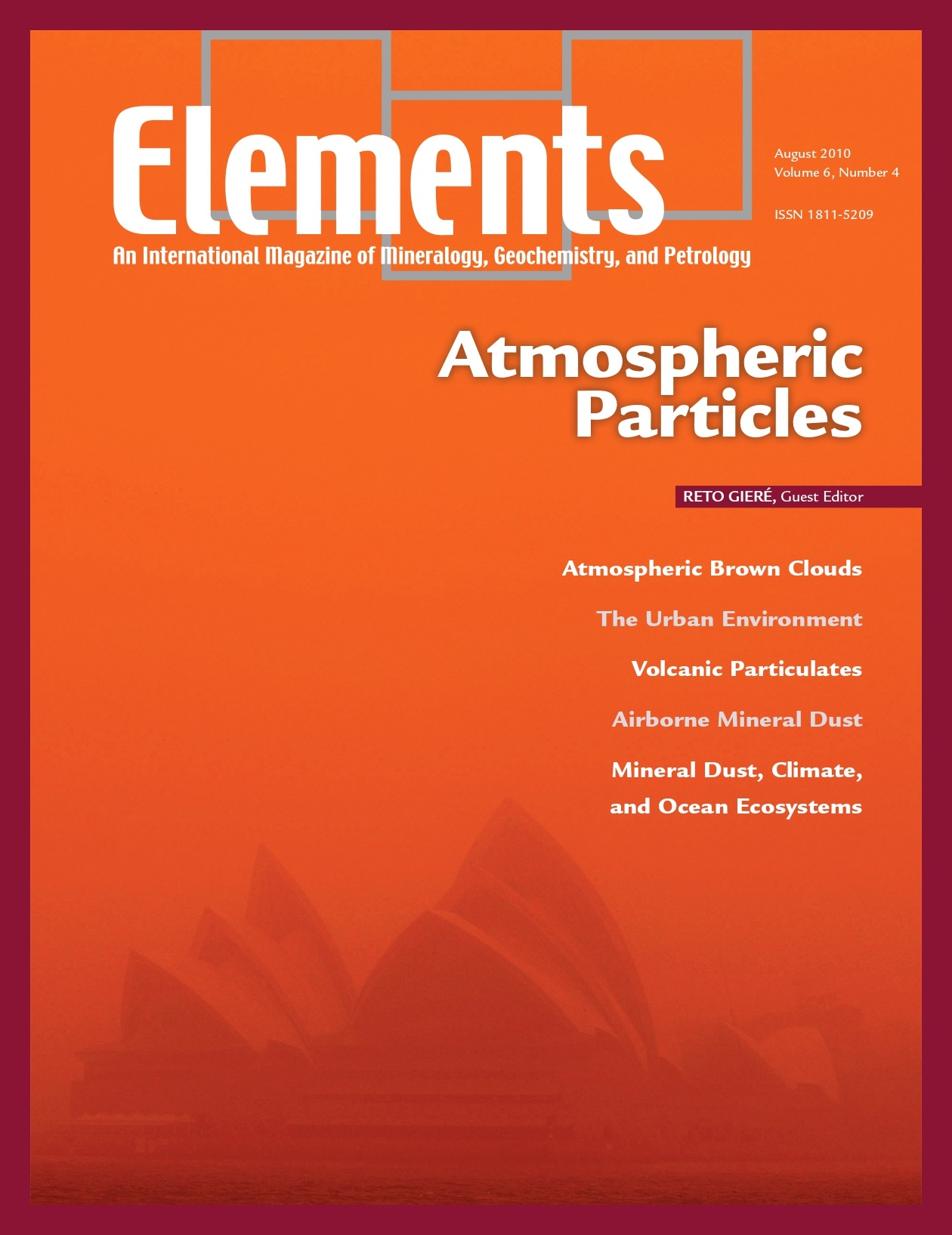
Bentonites – Versatile Clays, April 2009, Vol. 5, No. 2
June 28, 2024
Cosmochemistry, February 2011, Vol. 7, No. 1
June 28, 2024Atmospheric Particles, August 2010, Vol. 6, No. 4
$20.00
Solid atmospheric particles range in size from a few nanometers to several micrometers and are generated through both natural processes and human activity. Even though these particles are derived from spatially limited source areas and typically become airborne during short-term events, they are ubiquitous globally due to atmospheric circulation.
Atmospheric Particles
August 2010, Vol. 6, No. 4
Solid atmospheric particles range in size from a few nanometers to several micrometers and are generated through both natural processes and human activity. Even though these particles are derived from spatially limited source areas and typically become airborne during short-term events, they are ubiquitous globally due to atmospheric circulation. Depending on their physical and chemical properties, these solid aerosols have a major impact on the radiative properties of the atmosphere and glaciers, on cloud condensation, and on the chemical composition of oceans and soils. Because these particles affect transportation and human health, they have recently become the focus of government attention and regulation. This issue of Elements explores the atmosphere as an exciting new research area for mineralogists and geochemists. It illustrates the most prominent types of atmospheric particles and discuss their key effects on climate and ecosystems worldwide.
Why You’ll Love Elements Magazine:
- Expert Contributors: Articles written by renowned researchers in the field of geoscience.
- Engaging Content: Join a community of readers who are passionate about Elements.
- Exceptional Quality: Each issue is printed on high-quality paper with stunning visuals and detailed illustrations that bring complex scientific concepts to life.
Order your copy of the August 2010 issue of Elements magazine today and delve into atmospheric particles.
Related products
-
Fluids in Planetary Systems, January 2005, Vol. 1, No. 1
$20.00Water and other geofluids play an important role in the geochemical and rheological evolution of the Earth and other bodies in the solar system. These fluids are responsible for the formation of hydrothermal mineral deposits, affect eruption behavior in volcanic systems and the geophysical properties of the mantle, and significantly affect the way in which rocks deform and fracture.
-
Nanogeoscience, December 2008, Vol. 4, No. 6
$20.00At first glance, nano and Earth seem about as far apart as one can imagine. Nanogeoscience seems to be a word connecting opposites.
-
On The Cutting Edge: Teaching Mineralogy, Petrology, And Geochemistry, April 2007, Vol. 3, No. 2
$20.00New advances in research on learning have important implications for teaching mineralogy, petrology, and geochemistry. Effective instructional practices are increasingly student centered, address diverse student learning styles, and employ a variety of active-learning strategies.




